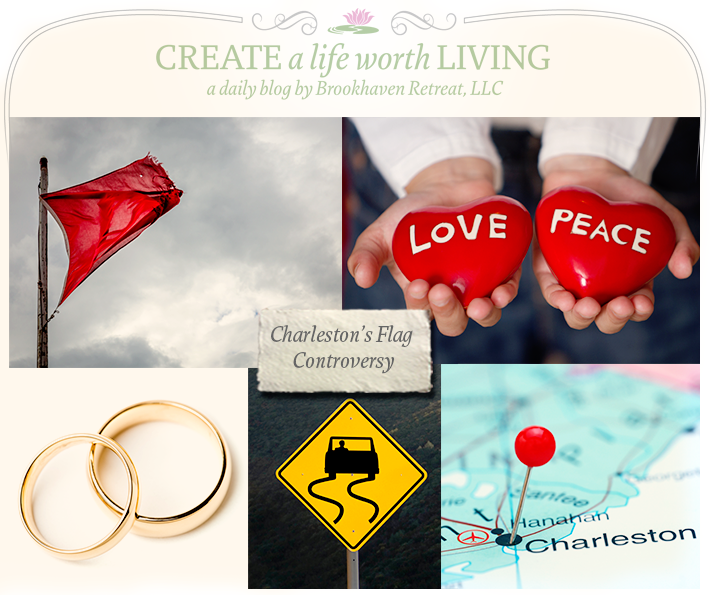
In Charleston, South Carolina, there is new energy in an old debate. Since the horrendous attack on a church Bible study group, the appropriateness of flying the contentious Confederate battle flag is once again being questioned. Also known as the rebel flag or as ‘Stars and Bars’, the controversial flag is associated with the rebellion and succession of the southern states during the Civil War. The flag, as a symbol is as divisive as the war through which it was carried. One side of the debate views the flag as a racist reminder of the oppression of slavery. The other side views it as a symbol of defiance. The most important thing to remember, however, is that the flag is just a symbol and derives its power directly from the person viewing the symbol.
A symbol is an object or image that represents an idea or a belief. Symbols are prolific representations of everything from marketing brands to religious beliefs and are an integral part of our lives. A symbol can be a complex amalgam to convey complex information in a single image or they can be simplistic in design. Consider the humble stop sign. It is a red octagon, which may or may not have the word ‘stop’ written across it. Even young children who cannot read quickly learn to stop and await further instruction. By comparison, the yellow diamond sign with a car and wavy tire tracks or the image of a stick person falling with arms splayed communicates the idea that a surface is slippery when wet. While most symbols are meant to be helpful or are benign, occasionally a prominent symbol can convey different meanings to different people. Symbols contain the meaning that we assign to them and, the controversial flag is nothing more than a symbol. Some view it with positive image associations; others view it in a more nefarious way. The flag, itself, has no power to harm or heal.
Symbols only posses the power that people collectively give them. Why, then, are some symbols more powerful than others? It’s simple, we, as a culture, have decided that they must mean more. We assign each of them an emotional meaning and that meaning is different for each cultural group that encounters the symbol. The controversial flag in South Carolina is just one of many symbols with dual meanings. Take, for example, the simple image of a wedding ring. For many women, the wedding ring is a symbol of love and commitment. For others who are trapped in a loveless or violent marriage, however, the wedding ring is symbolic of their imprisonment. They are reminded of their inability to escape every time they look at their hand. These women suffer anxiety, stress, and depression when they see their wedding ring. They do not feel joy or love.
While symbols may appear to have some magical power, the truth is that they only have the power that we allow them to posses. A wedding ring may hold sentimental value but it is not capable of forcing anyone to stay in an abusive relationship. The power is an illusion because the ring itself does not physically tie two people together. Don’t get me wrong; there is real power in the world. There is real racism, sexism, and oppression. People still suffer from these abuses. However, neither the wedding ring nor the flag in South Carolina posses the power attributed to them nor do they have the ability to oppress or abuse anyone. They are symbols and, as such, can have their assumed power stripped from them through positive emotional changes, education, or even through being ignored. Politicians cannot legislate symbolic change. That is beyond their scope of abilities. However, it is difficult to maintain an illusion of power when nobody is paying attention. Ignore the symbol and it loses its power.
